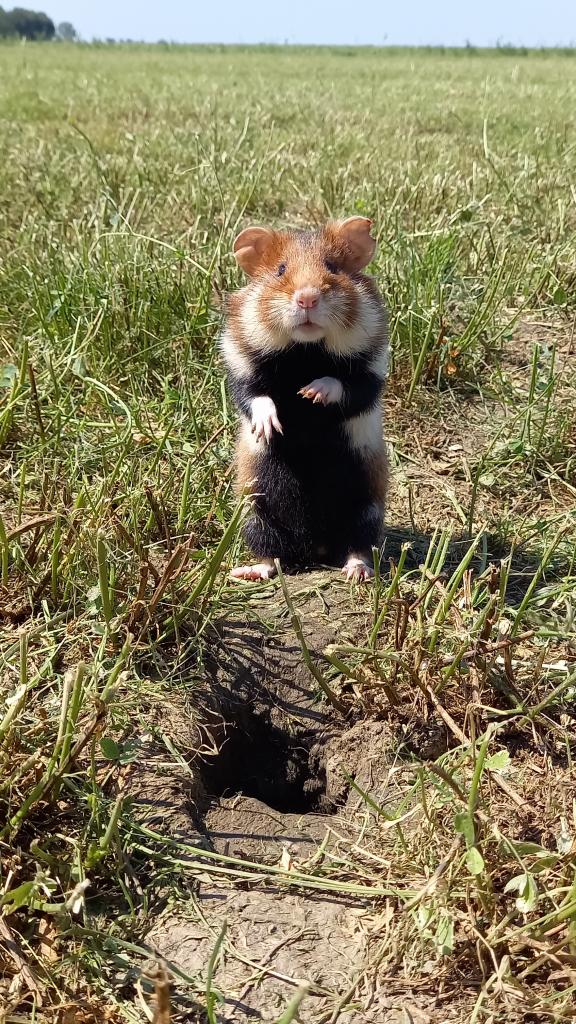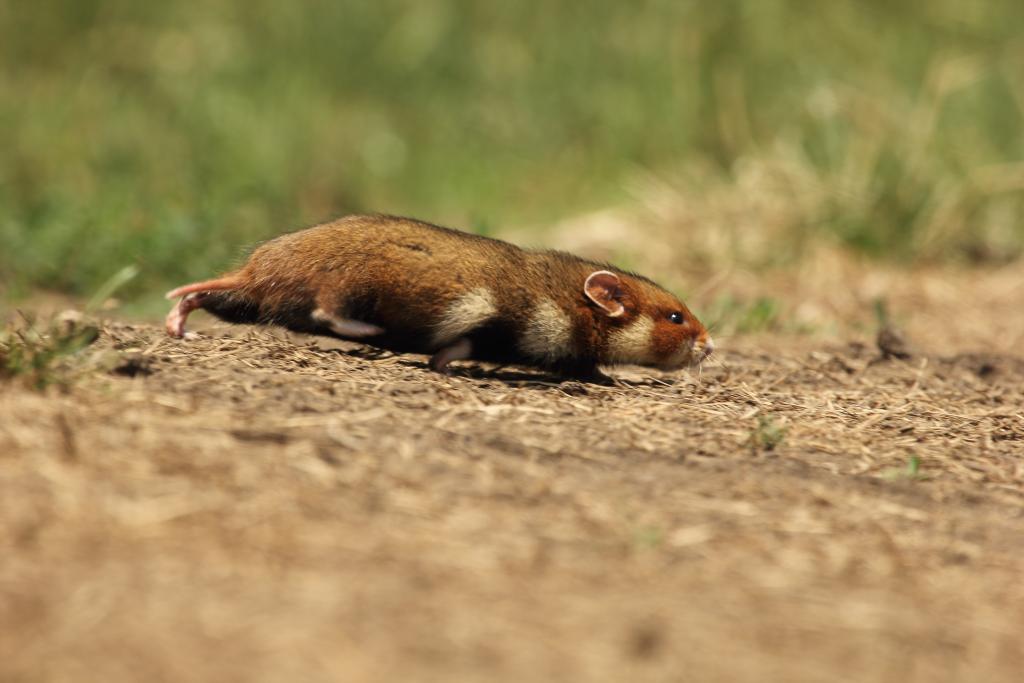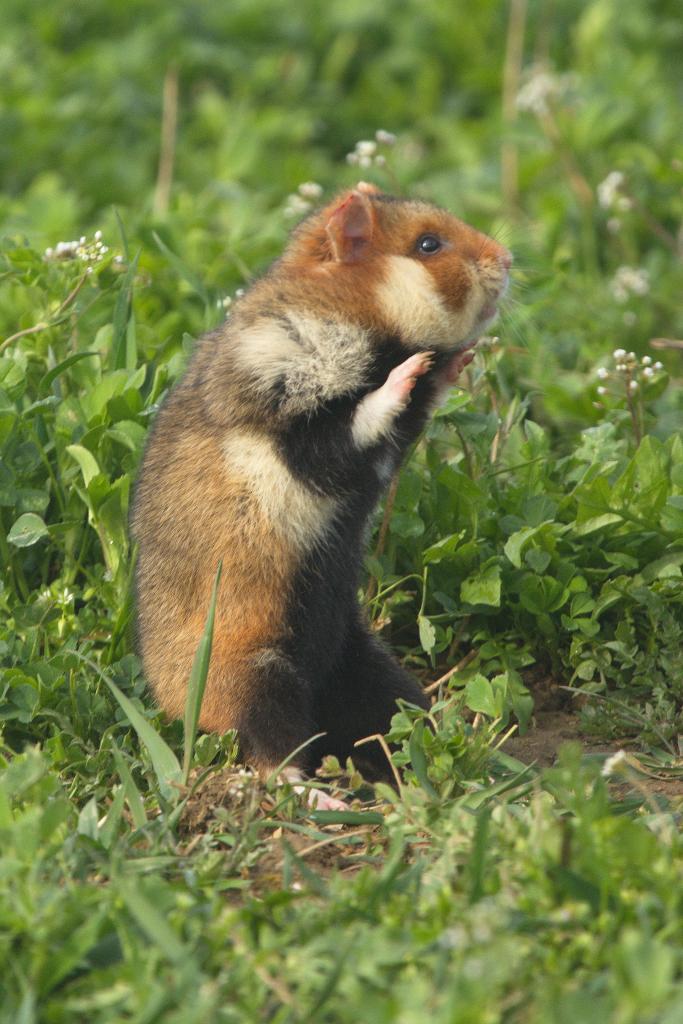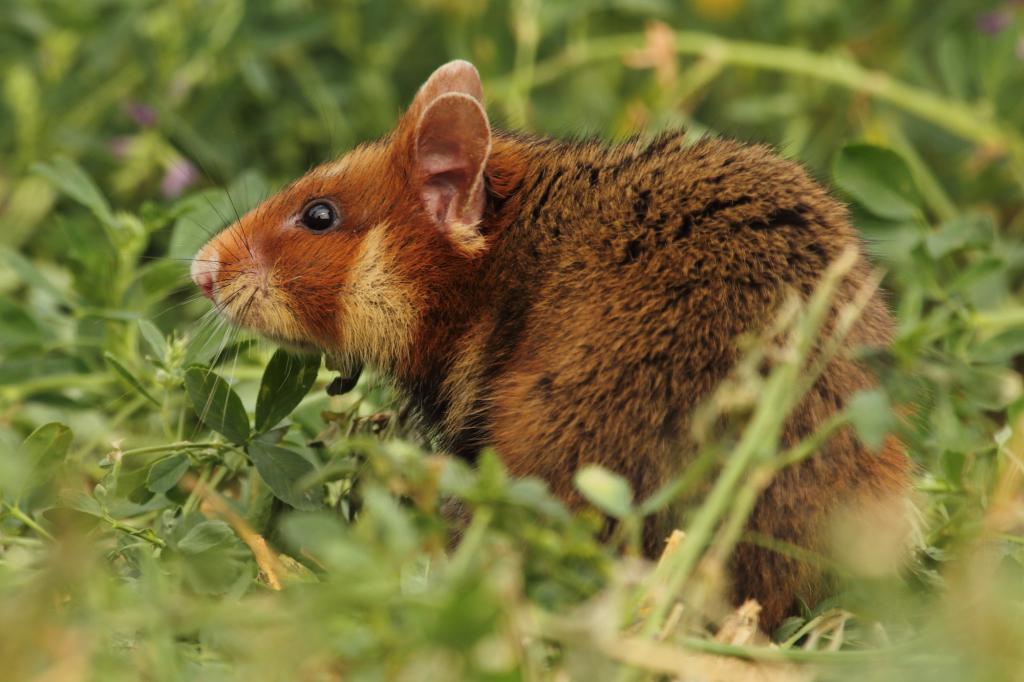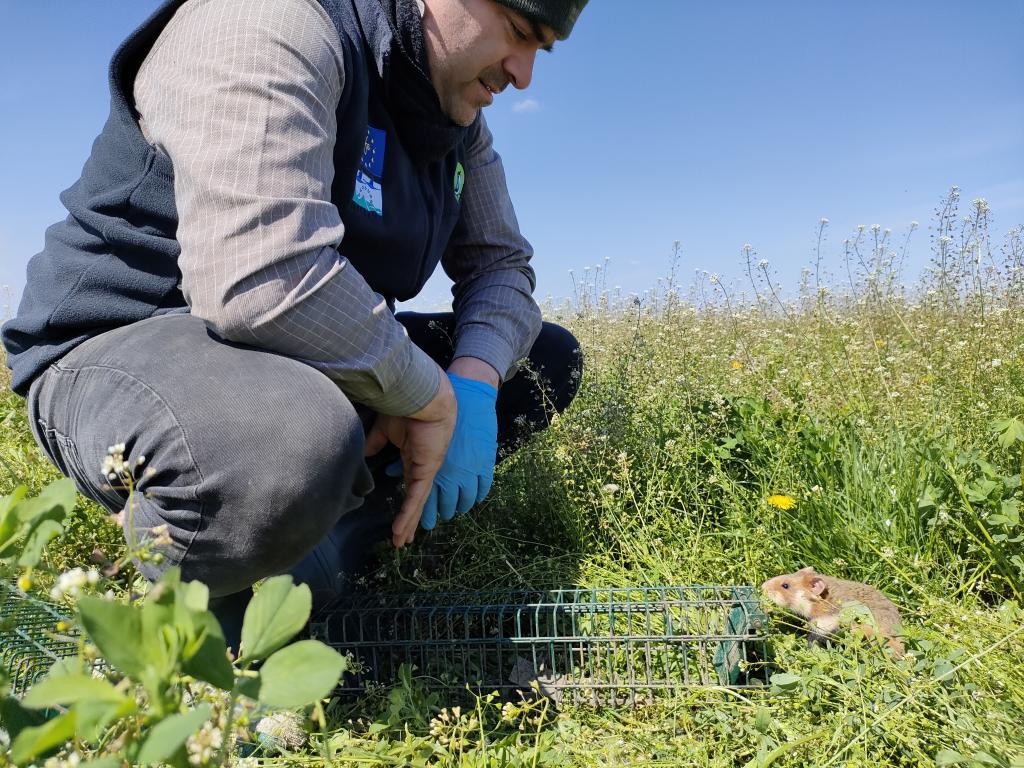Secret message - in the fur of a hamster
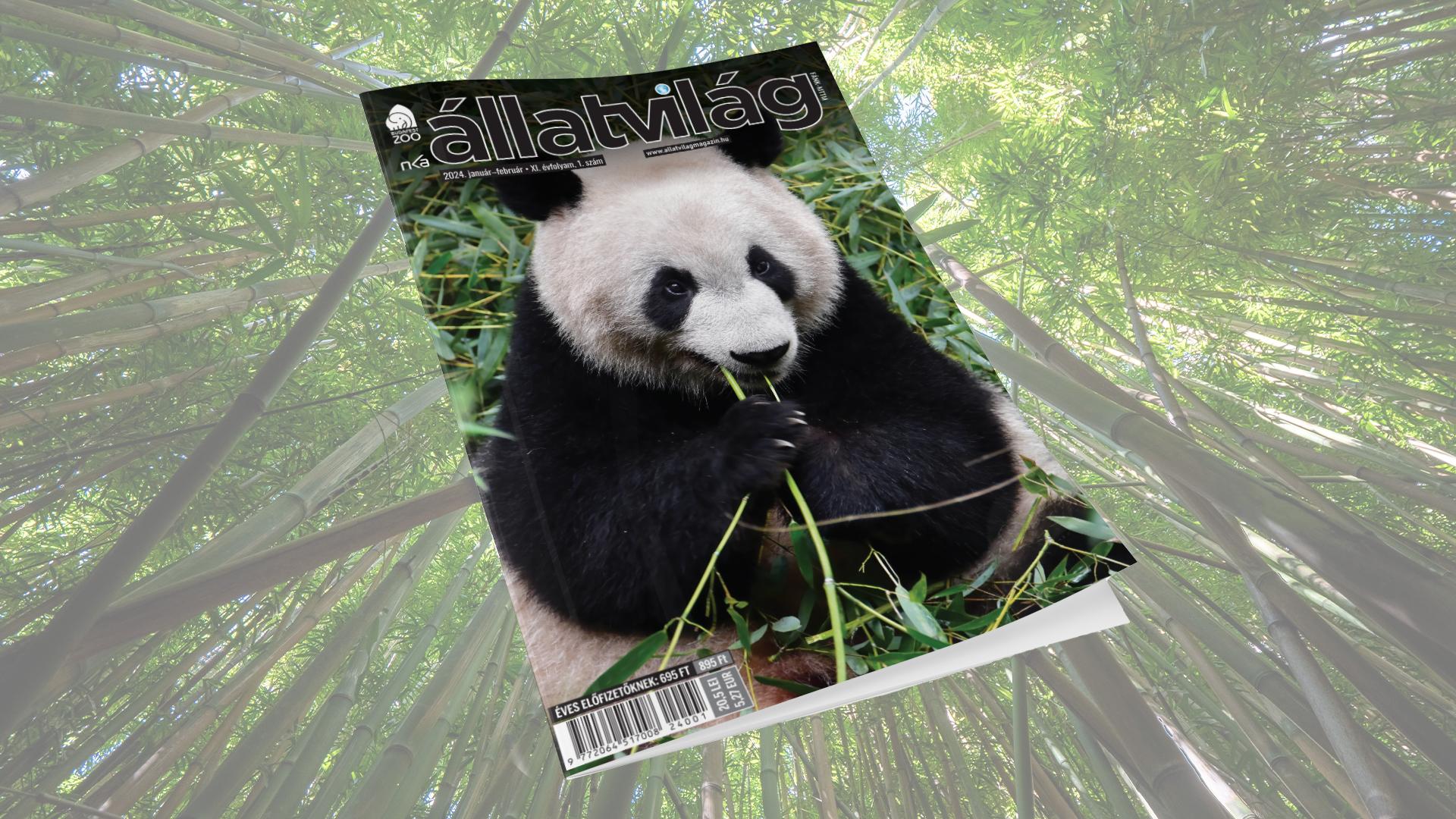
In Péter Bacsó's absurdist classic film The Witness, the communist state accuses the protagonist and his disgraced friend of passing "secret messages sewn in the skins of ground squirrels" to the frogmen. According to the story, the two characters do indeed come into contact with the "greatest enemy of the dam, the ground squirrel", but in the film's portrayal of their effective defense against them, our heroes are actually beating the living daylights out of a (european) hamster.
Indeed, since the film was shot in 1969, much has changed, and since then neither the ground squirrel nor the hamster has become the dam's worst enemy. On the contrary, they need conservation protection. In this article, we therefore review the latest conservation and scientific findings on the European hamster, with a special focus on the message encoded in the hamster's entire genome, the entire genetic material of the animal.
To understand exactly what is going on around the hamster, it is worth briefly summarising what we know from the past. Native to Hungary, this small mammal is the largest colonial rodent in our country. The adult male can weigh up to 700 grams. Its dark belly fur and lighter reddish-brown dorsal hairs make it look very aesthetically pleasing. However, its attractive appearance has not been to its advantage, and it has been collected for fur coat production in surprisingly large numbers in Hungary and other countries, especially since the mid-20th century. Among rodents, the hamster is particularly long-lived, living up to eight years in captivity. In the wild, however, most individuals are lucky to live only one and a half to two years. This means that the development of individuals is rapid, with gestation lasting only three weeks and the young reaching sexual maturity in two months. This means that they can reproduce in the year of their birth. In addition, the breeding season is long, usually from April to August without interruption, so it is possible that an older specimen awakened from hibernation can produce up to three generations of offspring in a year.
This amazing reproductive capacity - common to rodents in general - ultimately allows populations to survive over the long term by increasing their size significantly in a relatively short time under favourable conditions. This is called gradation. Winter months of scarcity usually reduce the size of populations significantly. Hamsters try to survive this period of food scarcity by building living chambers in their burrow systems, which they visit once a week. They close their burrows before the frost sets in, so this decorative-looking rodent is not usually seen in winter. Their burrowing systems, which penetrate more than a metre into the ground, have probably played a major role in the european hamster's relatively successful adaptation to large-scale human activities in nature. The species originally inhabited the grasslands (steppe) of Eurasia, which mankind largely converted into agricultural land in response to its ever-increasing demand for food. Yet significant populations have been established, typically in mosaic-use agricultural regions. In these areas, hamsters, accustomed to the diverse flora of grasslands, find food sources that meet their needs and survive ploughing in their burrows. However, small-scale farming has now been replaced almost everywhere by monocultures of tens of hectares, with the replacement of what could be called 'natural' production by agricultural techniques using chemicals.
Could be extinct by 2038?
The decline of european hamster populations in agricultural areas really accelerated with the appearance of effective rodenticides, from around the middle of the last century. This phenomenon first became dramatic in the western European distribution areas. The steady decline and disappearance of populations led the International Union for Conservation of Nature (IUCN) to re-examine the conservation status of the species in 2020. An alarming acceleration in the rate of extinction was observed throughout the entire Eurasian range! Astonishingly, their calculations indicated that, in the absence of conservation measures, the european hamster could be completely extinct by 2038. In fact, it will disappear much sooner in many parts of its habitat, including Europe.
According to the IUCN summary, only the Hungarian (more specifically the Pannonian) and part of the Russian populations were stable. Since the summary article on the hamster was published in Animal World magazine in 2018, the conservation status of this species has changed a lot, unfortunately not in a positive way. In an unprecedented move in 2020, the International Union for Conservation of Nature (IUCN) has reclassified the european hamster from 'least concern' (LC) status to 'critically endangered' (CR) status, jumping four conservation categories in one go. The seriousness of the situation is shown by the fact that this has never happened before.
Analysis of genetic data has shown that the Danube is a major barrier for this species. Surprisingly, however, the european hamster is able to cross rivers smaller than the Danube. In general, the populations studied are relatively close to each other in genetic terms. It is also interesting that population genomic indicators did not differ significantly between populations that were considered to be declining and those that were considered to be increasing.
Building on the experience of a successful breeding programme in France, among others, since 2014. Similar initiatives have been launched in several European countries since 2020, from the Netherlands to Poland and Ukraine. In Hungary, on the other hand, in a unique way in the European Union, it is still legal to eradicate the European Hamster in arable fields. The reality is, of course, that in some countries further east of ours they are still being exterminated without permission.
Five main genetic groups
At the end of 2022, Russian researchers published a very interesting paper outlining the genetic structure of the species, covering the entire range of the european hamster. Using traditional genetic methods, which are primarily used to study large-scale evolutionary changes, they revealed the geographic pattern that is typical today. Five main groups can be distinguished, of which only three are found in Europe. The first is found in the areas west of the German-Czech border (Western Europe); the second covers a large contiguous area on the eastern side of the Carpathians, from Poland to Kazakhstan (Eurasian steppe), but the third and most ancient lineage in Europe is the most important for us. It includes only the populations occurring in the lowland areas from Moravia to Dobruja, the most important of which are found in Hungary. It is particularly interesting that the lineage (Pannonian) that occurs in our country have separated around 100,000 years ago. This shows that the Hungarian hamster population is of particular conservation value. Unfortunately, however, the sad prediction of a 2018 article on the european hamster in the Animal World magazine seems to be coming true. Despite a more or less favourable situation in 2020, there are now only six regions with hamster populations in our country. In addition, most of these are also undergoing a significant decline, i.e. are disappearing.
A milestone in hamster research
In 2019, the Hungarian Natural History Museum joined a major conservation initiative, a LIFE integrated project, Grassland-HU, in which the conservation status of Hungarian european hamster populations is being studied using state-of-the-art genetic methods in cooperation with the University of Debrecen.
The collection of the samples for these studies in 2023 required a major effort by researchers, as hamsters are now hard to find east of the Danube. The 2023 survey of the current occurrence in Hungary therefore showed that stable or increasing populations in arable fields are only found in the Kis-Alföld area. At the same time, a very interesting phenomenon was observed, especially in the Danube-Tisza area, where populations have disappeared from arable fields, but small populations can still be found in the gardens of small surrounding villages. The moderate ability of the European Hamster to move directly into human settlements, the so-called urbanisation, is a known phenomenon. We know from historical records that hamsters have been found in parts of Moscow since the mid-19th century, but there are also small populations closer to Hungary in western European cities such as Vienna. However, the conquest of these distant settlements did not happen simultaneously, so urbanisation has been an ad hoc phenomenon. So what we have now observed in the Danube-Tisza area, i.e. the simultaneous colonisation of several settlements within a region by hamsters, was not previously observed.
An uncertain future
The conservation status of the European Hamster in our country does not seem to be favourable at present. However, this species also shows a large fluctuation in population size, which is typical for rodents in general, and which is cyclical over several years. According to our current knowledge, this is typically a ten-year cycle for the hamster in Hungary. Thus, it cannot be completely excluded that populations with densities below the detection limit will start to increase later. Unfortunately, however, the problem is that due to the increasingly intensive technologies used in agriculture, populations are no longer able to regenerate after a population minimum, so the preparation of conservation measures is an important task. Therefore, Hungarian researchers have analysed the perception of the hamster in Hungarian society in a questionnaire survey. The survey revealed that this perception is contradictory. Farm workers still regard it as a major pest. However, even in the municipalities where the hamster has moved in during its recent urbanisation, the perception is mostly favourable and residents reject control techniques that destroy the animals, despite the losses caused in their small gardens.
What can we do to protect it?
So Hungary could still be a key player in saving the species, but the options are narrowing. The changed international conservation status and changing attitudes of society could provide a basis for amending the relevant legislation in Hungary. The hamster is becoming less of a problem with its damage, so a compensation scheme could possibly improve its image among farmers. In this way, instead of using chemicals to control the species, this section of society could also become interested in its conservation.
The 2023 surveys identified a number of inland areas where there was a high demand from the general public to reduce the size of the population. In these areas, researchers have made a major effort to capture the animals and, in cooperation with the conservation authority, have moved them to areas prepared for reintroduction. It is gratifying that the public, researchers and conservation authority staff have been able to work together in harmony to protect the animals, thus ensuring that conservation objectives and the interests of the public are met.
Practical conservation measures are also increasingly necessary. For example, the Ancestral Pannonian lineage does not yet have a successful breeding programme, but well-planned translocation actions are also of paramount importance in saving endangered populations. In addition, saving the Hungarian population of the European Hamster is not an end in itself, as it is a key prey species for several protected or highly protected predator species, such as the Eastern imperial eagle, the Saker falcon and the Steppe polecat.
Source: Állatvilág magazin (Animal World magazine) – Lajos Szatmári–Gábor Sramkó–Tamás Cserkész
Photo by Virág Nyíri, Tamás Cserkész
The publication of this article was supported by the European Union LIFE Programme in the context of the LIFE IP GRASSLAND-HU (LIFE17 IPE/HU/000018) project. The views expressed herein do not necessarily reflect those of the European Union.
